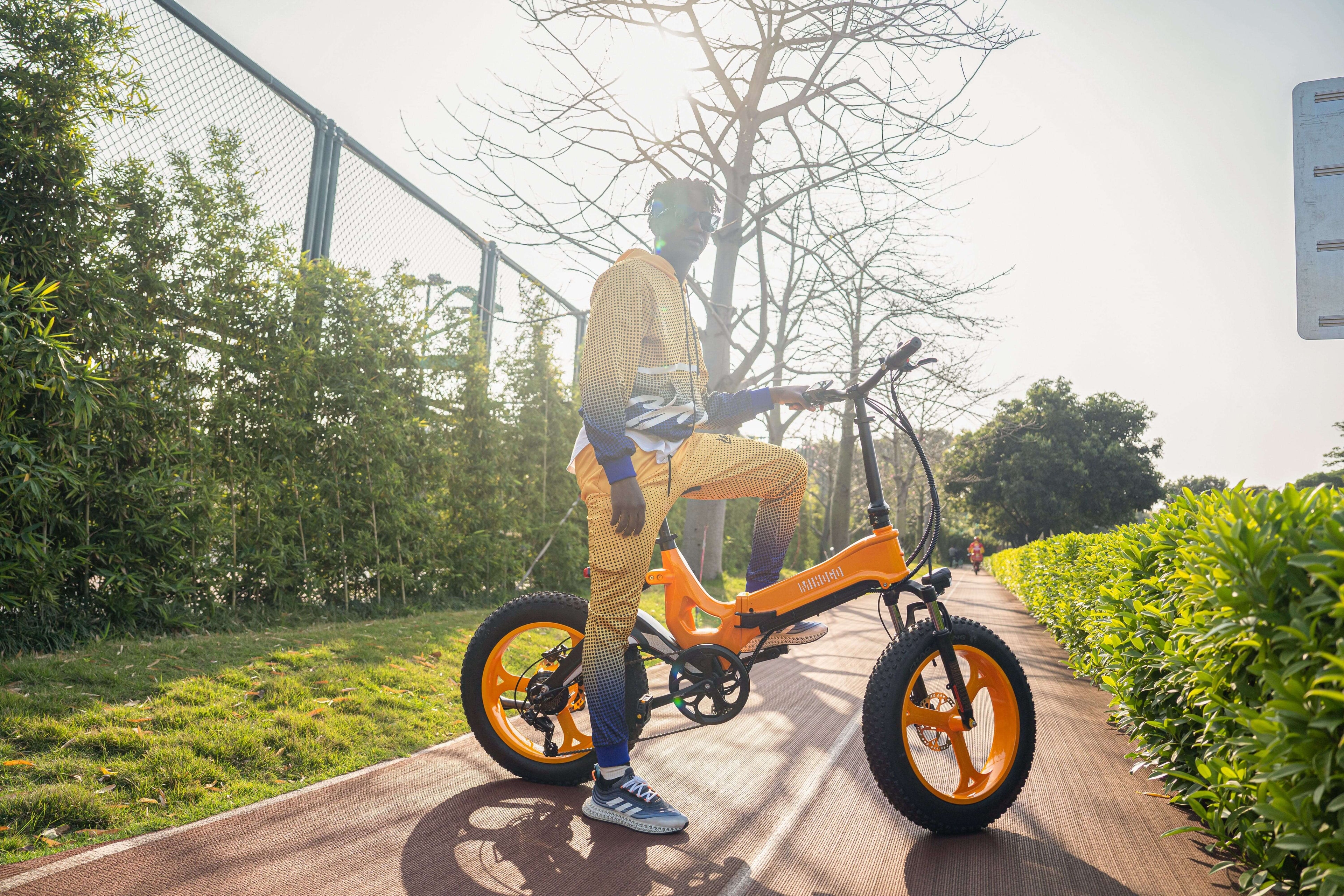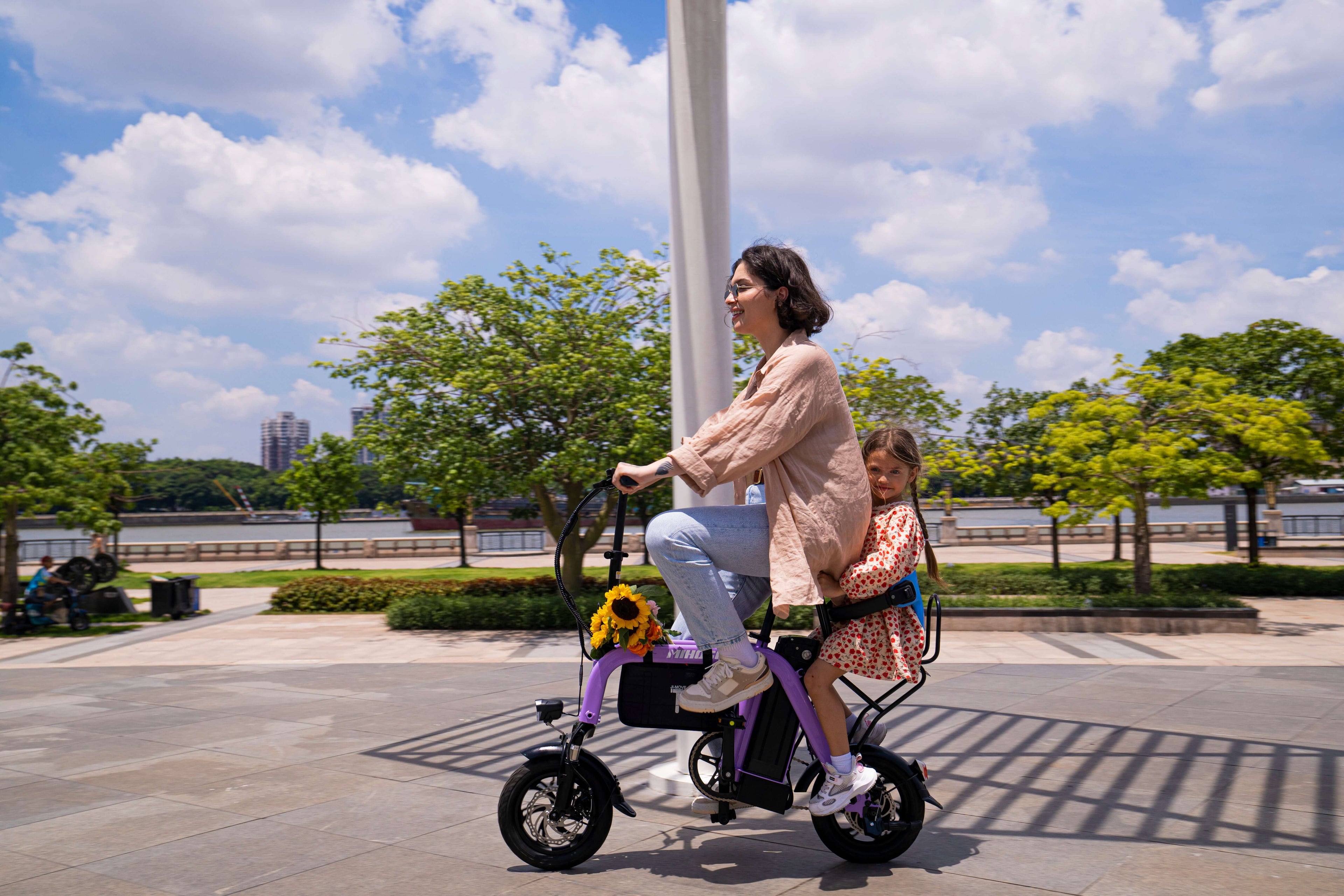Understanding Seasonal Storage Requirements
Seasonal e-bike storage differs significantly from short-term parking. Extended storage periods—typically lasting four to five months during harsh weather seasons—require specific preparation to prevent battery degradation, component corrosion, and performance issues.
Temperature Guidelines for Mihogo E-bikes
Optimal Storage Temperature Range: 32°F to 68°F (0°C to 20°C)
Battery-Specific Requirements:
- Safe storage: 50°F to 77°F (10°C to 25°C)
- Extreme limits: Can withstand down to -4°F (-20°C) temporarily
- Danger zone: Above 90°F (32°C) accelerates degradation
Model-Specific Storage Recommendations
MIHOGO ONE Utility E-bike - Premium All-Season Storage
With its impressive 167-mile dual battery range and IPX5 water resistance, the MIHOGO ONE requires specialized care for optimal longevity.
Winter Storage Protocol:
- Remove both batteries and store indoors at 75-80% charge level
- Utilize temperature-resistant features (battery activity remains above 79% at -20°F)
- Store bike frame in garage or shed between 32-68°F
- Monthly battery charge checks to maintain 75-80% level
Summer Storage Considerations:
- Keep batteries away from direct sunlight and extreme heat
- Monitor garage temperatures—remove batteries if consistently above 90°F
- Leverage automotive-grade rust protection for frame storage
Mihogo Air750 Max - Carbon Fiber Care
The lightweight carbon fiber construction requires specific attention during storage periods.
Storage Location: Cool, dry environment to prevent carbon fiber degradation
- Battery Management: 48V system benefits from indoor storage
- Frame Protection: Carbon fiber resists corrosion but requires stable temperatures
- Range Preservation: 121-mile capacity maintained through proper battery storage
MIHOGO RX 2.4 - Folding Convenience Advantage
The compact folding design offers unique storage flexibility for space-constrained environments.
Indoor Storage Benefits:
- Foldable frame fits in climate-controlled spaces easily
- 500W motor and 40-mile battery benefit from stable temperatures
- Reduced exposure to humidity and temperature fluctuations
Mihogo Mini - Lightweight Protection
The 350W motor and 62-mile range system requires gentle seasonal care.
Optimal Conditions: Moderate temperature environments
- Storage Recommendation: Indoor storage preferred due to lightweight construction
- Battery Care: Smaller battery system benefits from frequent monitoring
Comprehensive Seasonal Storage Checklist
Pre-Storage Preparation
Deep Cleaning Protocol:
- Remove all dirt, salt, and debris from frame using warm water and mild dish detergent
- Dry thoroughly with clean cloth to prevent corrosion
- Clean battery contacts to prevent oxidation
- Lubricate chain with bicycle-specific lubricant (avoid WD-40)
- Check tire pressure and adjust to manufacturer specifications
Battery Preparation:
- Charge to 50-70% capacity (75-80% for Mihogo models with advanced battery management)
- Remove from bike and store indoors at room temperature
- Never store completely depleted or fully charged
- Use original charger only for pre-storage charging
Monthly Maintenance During Storage
Battery Monitoring: Check charge levels monthly and maintain within optimal range. Aventon batteries are lithium-ion, and should never be stored with their charge level completely depleted, and this principle applies to all quality e-bike batteries including Mihogo's advanced systems.
Environmental Checks:
- Monitor storage area temperature and humidity
- Ensure adequate ventilation in storage space
- Check for signs of moisture or condensation
- Inspect bike cover for proper fit and protection
Storage Location Options by Climate
Garage Storage - Most Common Solution
Ideal Temperature Range: Between freezing and room temperature, or 32° to 68° Fahrenheit (5 and 20 degrees Celsius), is the optimal range for e-bike storage.
Garage Storage Benefits:
- Protection from direct weather exposure
- Generally stable temperature environment
- Easy access for monthly maintenance checks
- Space for multiple bikes and accessories
Humidity Control: High humidity poses the greatest threat to long-term storage. The biggest enemy to your ebike and its components is high humidity. This will still cause some potential rust and corrosion over time. Combat this with:
- Adequate ventilation
- Dehumidifiers in extremely humid climates
- Quality bike covers for added protection
- Regular moisture monitoring
Shed Storage - Alternative Solution
Outdoor sheds provide excellent storage when properly prepared:
- Ensure weatherproofing and insulation
- Install ventilation to prevent condensation
- Monitor temperature fluctuations
- Consider small heating elements for extreme cold climates
Indoor Storage - Premium Option
For valuable models like the Air750 Max or when extreme weather conditions persist:
- Basement or spare room storage ideal
- Climate-controlled environment optimal
- Folding models like RX 2.4 excel in indoor storage
- Complete protection from temperature extremes
Advanced Storage Techniques
Battery Management Systems
Modern Mihogo e-bikes feature sophisticated battery protection:
- MIHOGO ONE's dual battery system requires individual monitoring
- Temperature protection modes activate below 32°F
- Smart charging prevents overcharging during storage
- Battery management extends lifespan significantly
Seasonal Maintenance Schedules
Develop systematic approach to seasonal transitions:
- Pre-storage preparation checklist
- Monthly monitoring protocols
- Spring reactivation procedures
- Professional tune-up scheduling
Climate-Specific Adaptations
Tailor storage strategies to local climate conditions:
- Desert climates: Focus on heat protection
- Humid regions: Emphasize moisture control
- Cold climates: Prioritize battery warmth
- Coastal areas: Combat salt air exposure
Spring Reactivation Protocol
After months of storage, proper reactivation ensures safe, optimal performance:
Pre-Ride Inspection:
- Professional tune-up recommended after extended storage
- Check brake and gear line functionality
- Inspect tire condition and pressure
- Verify all electrical connections
- Test battery charge and performance
Gradual Return to Service:
- Start with short test rides
- Monitor battery performance closely
- Allow components to readjust gradually
- Check all safety systems thoroughly
Professional Resources and Support
For complex storage situations or valuable e-bike collections, consult certified e-bike service centers that understand the unique requirements of electric bicycle storage. Many shops offer seasonal storage services specifically designed for e-bike owners.
Conclusion
Proper seasonal storage protects your Mihogo e-bike investment while ensuring peak performance when riding conditions improve. The MIHOGO ONE's advanced all-weather capabilities, combined with proper storage techniques, provide year-round reliability. The Air750 Max's premium components benefit from careful temperature control, while folding models like the RX 2.4 offer storage flexibility that simplifies seasonal care.
Key Storage Principles:
- Maintain optimal temperature ranges (32-68°F for bike, 50-77°F for battery)
- Control humidity and ensure proper ventilation
- Monitor battery charge levels monthly (75-80% optimal)
- Choose storage location based on climate and bike model
- Schedule professional inspections after extended storage
Model-Specific Recommendations:
- MIHOGO ONE: Leverage dual battery system and weather resistance for flexible storage
- Air750 Max: Protect carbon fiber frame with climate-controlled storage
- RX 2.4: Utilize folding advantage for indoor storage
- Mini: Prioritize gentle care due to lightweight construction
Ready to prepare your Mihogo for seasonal storage? Explore our complete e-bike collection and discover which model best suits your local climate and storage capabilities.








